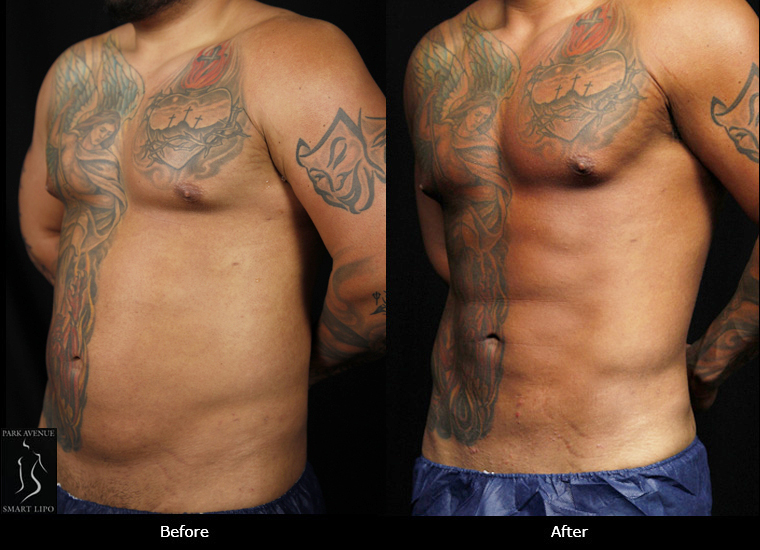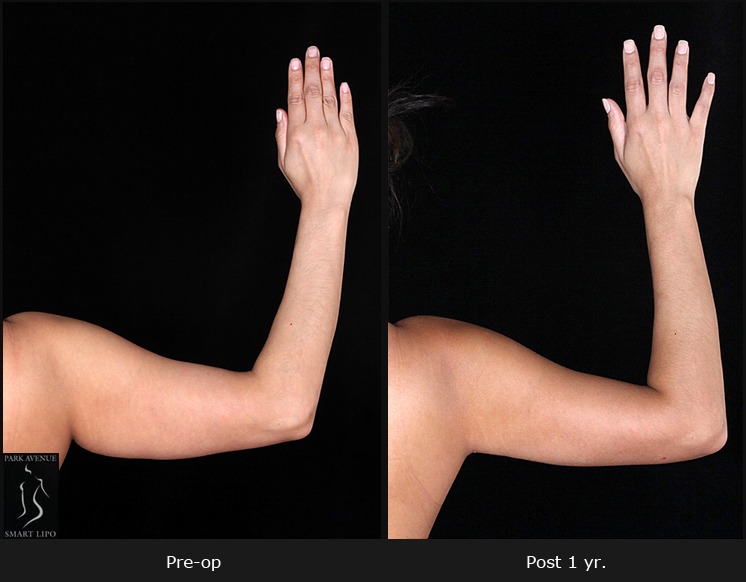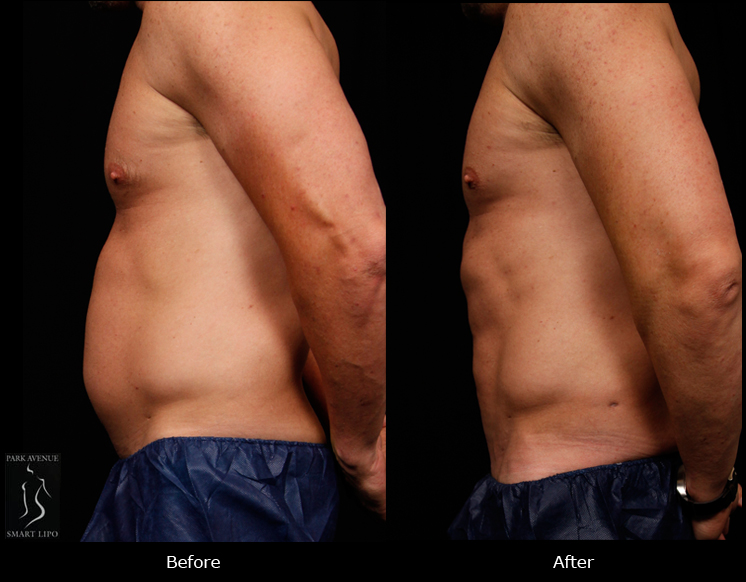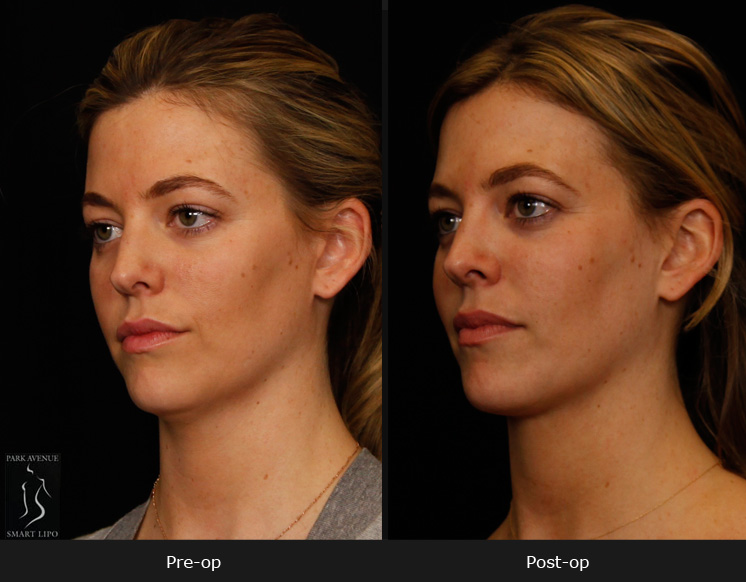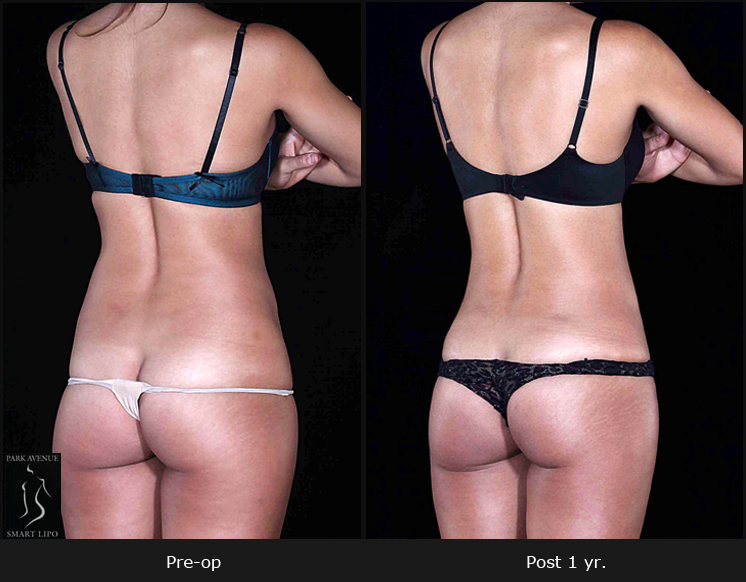Many people consider the knees to be one of the least attractive features of their legs due to the accumulation of fat deposits around the kneecaps. Weight gain, loose skin, or heredity can all contribute to excess fat buildup around the knees. Fat that builds ups towards the front of the knee is often difficult to lose weight through diet and exercise. Laser liposuction in NYC for knees is a safe and effective way to get rid of this stubborn fat quickly and efficiently. This laser-assisted liposuction for knees aims to create smaller, contoured knees that are proportionate to the rest of the legs.
What Is Knee Liposuction?
Knee liposuction is a procedure that helps to get rid of excess fat behind or on either side of the knees. The procedure provides more definition to the kneecap, the front structures of the knee, the lower fibula area, and the calves. It contours your knee area, giving your legs a more attractive look. Both men and women can benefit from this knee fat reduction procedure. Today, surgeons in NYC offer minimally-invasive knee reshaping procedures using the Smartlipo Triplex workstation.
Reasons to Consider Knee Liposuction
There are a number of reasons why people choose to have knee liposuction:
- Enhanced appearance: This procedure can significantly improve the shape and contour of your knees, creating a more balanced and attractive appearance. This can enhance the overall look of your legs, boosting your confidence.
- Targeted fat removal: Liposuction allows for precise targeting of stubborn fat pockets that may not respond to diet and exercise. This procedure provides a great solution for those struggling with localized fat around the knees.
- Improved clothing choices: Excess fat around the knees can limit your wardrobe options. By undergoing the procedure, you can enjoy greater flexibility in choosing clothing that showcases your legs, from skirts to fitted pants.
- Increased comfort: Many individuals feel self-conscious about the appearance of their knees, especially in shorts or fitted clothing. Removing excess fat can lead to increased comfort and a more positive self-image.
- Long-lasting results: The results can be long-lasting if you commit to a healthy lifestyle.
Is Smartlipo Effective for Knees?
Liposuction of the knees involves using a small laser-enabled cannula to remove the excess fat. Conventional liposuction surgery has given way to minimally invasive techniques such as laser liposuction. Smartlipo in NYC involves liquefying the fat cells prior to their removal. This innovative laser-assisted modality is powered by MultiPlex technology, a system that combines the advantages of many laser wavelengths-1440, 1064, and 1320 nm-into a single output for better outcomes.
Local anesthesia is typically utilized for this outpatient procedure, though general anesthesia may be required for bigger areas. By carefully targeting and eliminating the fat cells in the knee region without affecting the other tissues, the procedure results in more sculpted knees. Eating a balanced diet and regular exercising helps to maintain the results for a longer time.
This procedure improves the definition of the entire knee complex:
- Kneecap
- Front structures of the knee
- Lower fibula area
- Calves
- Lidocaine, the local anesthetic used in tumescent liposuction technique.
With this FDA-approved laser-assisted liposuction for knees, patients experience only minimal scarring, swelling, bleeding, bruising and pain. The procedure is performed on an outpatient basis under local anesthesia. Other benefits include:
Fatty tissues are liquefied and suctioned out effortlessly
- The loose skin in the knees is tightened for enhanced results
- Precise removal of fat, with reduced risk of overtreatment
- Short treatment time and downtime
- Faster healing and speedy recovery
- Minimal bleeding, swelling and scarring
Who Is a Good Candidate for Knee Liposuction?
Knee liposuction is an ideal option for adults who meet the following criteria:
- Have fat deposits in the inner knee area or front knee area
- Have good skin elasticity with no sun damage or sagging
- Have a stable weight
- Have realistic expectations about what liposuction can achieve
- Have a positive outlook and specific body contouring goals
- Are in good health
- Are ready to avoid alcohol and smoking at least two weeks before the surgery and after.
And, you are not a good candidate if you:
- Suffer from autoimmune deficiency disorders, cardiac disorders, bleeding disorders or hemophilia, or have a history of deep vein thrombosis (blood clots in the legs) or pulmonary embolism (blood clots in the lungs), which may increase the risk of complications.
- Are taking medications that increase the risk of bleeding (such as herbal supplements, aspirin or anticoagulants such as Coumadin) or any drugs that may inhibit the metabolism of Lidocaine, the local anesthetic used in tumescent liposuction technique.
- Expect liposuction to be an effective means to lose weight permanently. Remember that liposuction is not proven to be an effective treatment for obesity.
- If your skin does not have good elasticity, then there could be some degree of a crepe or slightly wrinkled appearance. However, in many cases, patients with poor skin elasticity are happy with their new self despite the slightly wrinkled appearance of the skin.
Recovery Process
The recovery time after liposuction surgery depends on many factors including the technique used, your health status, and how you care for yourself following surgery. Following your surgeon’s instructions can support speedy recovery and reduce the risk of complications.
Here are some tips to speed recovery:
- Wear Compression Garments: Wear the recommended compression garments as instructed by your surgeon. This helps reduce swelling, supports healing, and shapes the treated area.
- Follow a Healthy Diet: Maintain a balanced diet rich in vitamins and nutrients to support the healing process. Staying hydrated is important to reduce swelling.
- Take the Prescribed Medications: Take any prescribed pain relievers or antibiotics as directed to manage discomfort and prevent infection.
- Avoid Strenuous Activities: Refrain from intense physical activities, especially those that involve your knees, for at least a few weeks. Follow your surgeon’s guidance on when to resume exercise.
- Keep Follow-Up Appointments: Keep all scheduled follow-up appointments with your surgeon to monitor your progress and address any concerns.
- Keep the Area Clean: Gently clean the incision sites as instructed, and avoid soaking the area in water until your surgeon gives the go-ahead.
- Monitor for Unusual Symptoms: Look out for signs of infection or complications, such as excessive swelling, redness, or pain, and contact your surgeon if anything seems unusual.
Can This Procedure Be Combined with Thigh Liposuction for Shapely Legs?
Yes, knee liposuction can be combined with thigh liposuction. Combining this treatment with lipolysis of the inner thighs could result in well-shaped legs.
Benefits of Knee Liposuction
With Smartlipo in NYC, patients enjoy a range of advantages, including:
- Liquefied fat is removed efficiently
- Loose skin is tightened
- Advanced safety features like SmartSense™ and ThermaGuide™
- Minimal scarring and downtime
- Faster healing
- Natural-looking, long-lasting results
Reviewing knee liposuction before and after photos during consultation can help you set realistic expectations and better visualize your potential outcome.
Choosing a surgeon with extensive experience in performing knee liposuction utilizing Smartlipo is crucial for a successful outcome. An established AAAASF-accredited practice would have surgeons who are experts in performing laser liposuction in NYC for knee. When you are in the right hands, you can expect safe and effective treatment, making your knee reshaping journey smooth and successful.
Want to learn more about the recovery time after knee liposuction?
Would you like to see knee liposuction before and after photos before making a decision?


